Offa's Dyke: Monument damaged by 'centuries of benign neglect'
- Published
Hadrian's Wall and Stonehenge are in better shape, says Offa's Dyke Association
The United Kingdom's longest ancient monument has been damaged by "centuries of gradual benign neglect", says an association fighting to preserve it.
A fund has started to help preserve the 8th Century Offa's Dyke earthwork.
Offa's Dyke has "a lot of catching up to do" compared with other monuments like Hadrian's Wall and Stonehenge, according to its association chairman.
Dave McGlade said the 177 mile (285 km) monument on the Wales-England border is a "sensitive archaeological landscape."
"It is also a scheduled monument, protected by statute law, and deserves to be treated with the utmost respect," added the Offa's Dyke Association chairman.
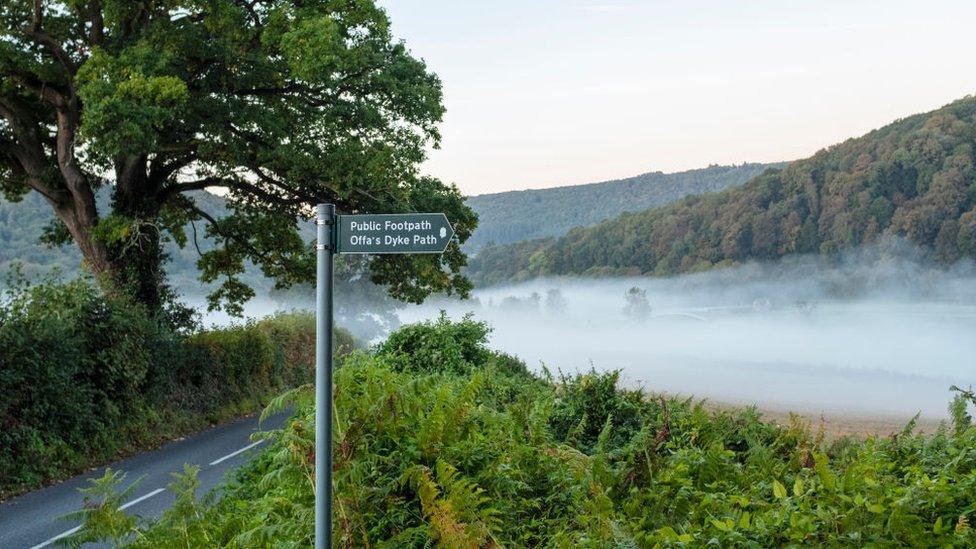
Offa's Dyke crosses the border between England and Wales more than 20 times
The association has said because the scheduled monument exists largely within private land, it has fallen to landowners and local communities to keep it maintained.
It said in consultation with Welsh historic environment body Cadw, the National Trail unit and Historic England, the Offa's Dyke Rescue Fund would seek to purchase parts of the monument considered to be under threat.
A 2017 survey showed just 8.7% of Offa's Dyke was in a "favourable condition" and artist Dan Llywelyn Hall has been commissioned for an exhibition celebrating 50 years of the Offa's Dyke Path.
He said while it is a "modest little bump in the landscape", it is "hugely important to our identity of Wales", such as in preserving the language and culture.
"It embodies a border culture between England and Wales and goes beyond that but it encases communities across the border that want to preserve it," said Mr Hall, from Llanfyllin in Powys.

The Offa's Dyke Path passes through eight Welsh counties on its route
"For a lot of people the path can seem irrelevant or inconvenient to maintain as it runs through a lot of private land and farm yard but once you lose that significance you never retrieve it."
What is the history behind Offa's Dyke?
Offa's Dyke is named after King Offa - the king of the Mercians, a warrior tribe from central England, from AD 747 to 796.
He ordered it to be constructed in the 8th Century, probably to divide his kingdom from rival kingdoms in what is now Wales, according to National Trails, external. The work required thousands of men.
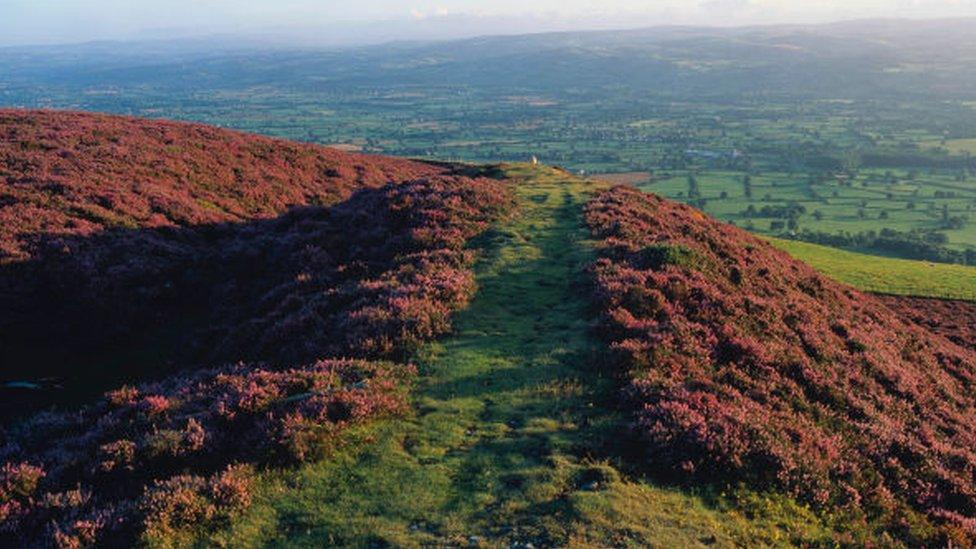
The 177 mile path earthwork runs between Liverpool Bay and the Severn Estuary
The earth bank in places still stands to a height of 12 feet (3.5m) and 60 ft (18m) wide.
What is the Offa's Dyke path?
The 177-mile National Trail, external opened in the summer of 1971 and links Sedbury Cliffs near Chepstow with the coastal town of Prestatyn on the shores of the Irish sea.
According to Visit Wales, fell-runners take an average of five days to complete it while hikers take 12 days.
It passes through eight different counties and crosses the border between England and Wales more than 20 times.
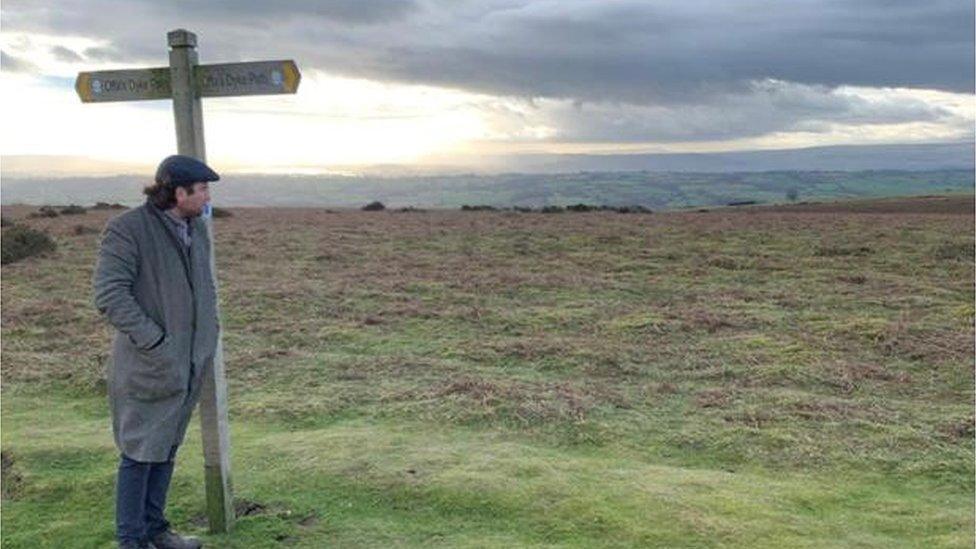
Dan Llywelyn Hall helped set up a fund to support the monument, alongside several organisations
It links three Areas of Outstanding Natural Beauty - the Wye Valley, the Shropshire Hills and the Clwydian Range / Dee Valley.
'The breathtaking borderlands'
The exhibition 'Walking with Offa' will bring together art, poems and music celebrating 50 years of the path and will run through from Saturday until October, at Offa's Dyke Association and Centre in Knighton.
Mr Hall said it was a way to persevere and shed light on the "monument of fragile existence that hasn't really been explored or given so much limelight," with the fund emerging after he and the association "realised it needed attention".
"We are hoping we can press upon people the importance of the monument and hope people will engage with it and absorb the sites and love it," he said.
The Offa's Dyke Path's national trail officer Rob Dingle said the monument is important for the local economy as it attracts walkers from all over the world.

Dan Llywelyn Hall has painted over 20 pieces for the exhibit - including this one of Valle Crucis in Llangollen
"They call it the breathtaking borderlands," he said.
"The trail itself brings walkers from all around the world to enjoy our landscapes and when they are here they are staying in Airbnb's, drinking in our pubs and spending in our shops so that money coming into the rural economy is huge."
He said because of the Covid pandemic, getting people to walk the trail and enjoy the area was "hugely important".

MABINOGI: LOST LEGENDS AND DARK MAGIC: Listen to the fantasy adventure series, based on medieval Welsh mythology
FIND SOME TIME TO READ: The Aberystwyth Book Club discusses Maggie O'Farrell's latest novel

Related topics
- Published26 January 2021
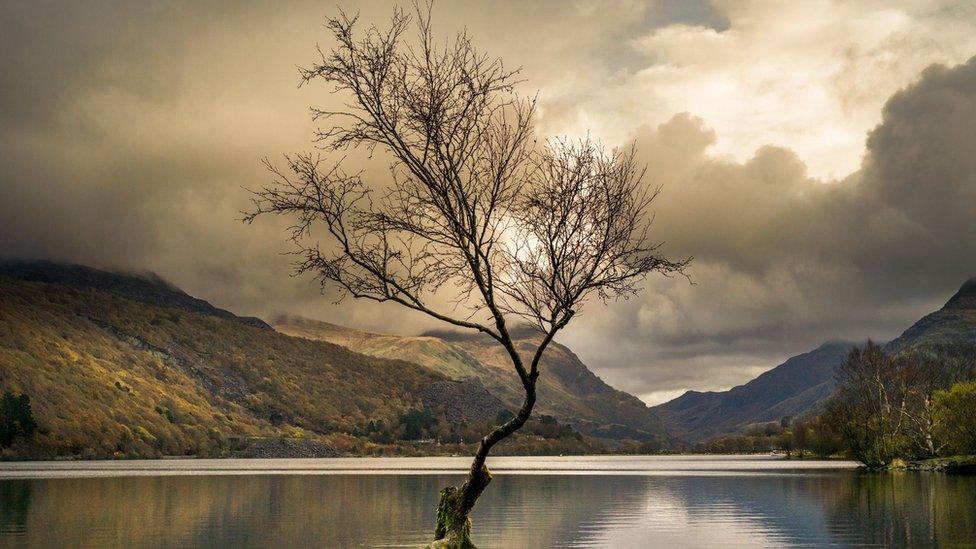
- Published7 June 2021

- Published5 August 2019
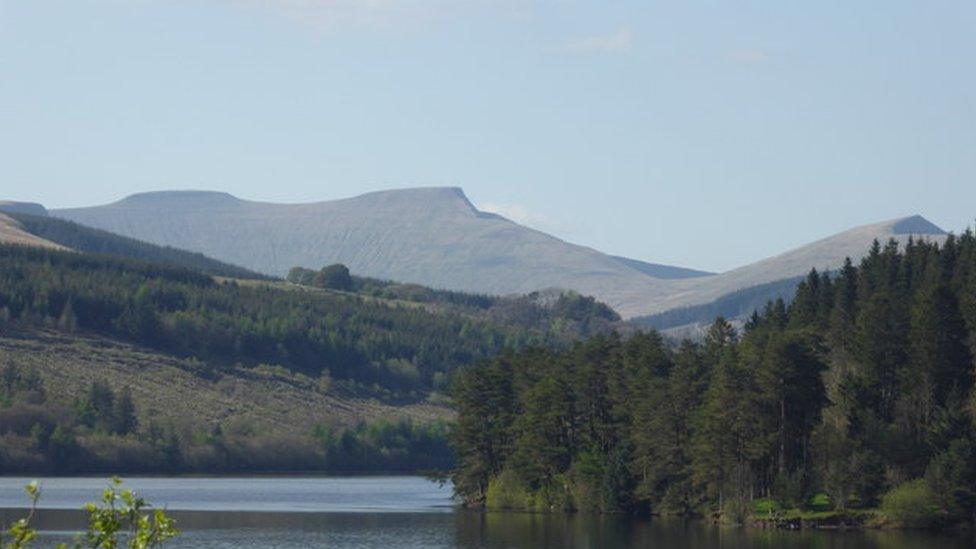
- Published16 July 2016

- Published23 April 2021
